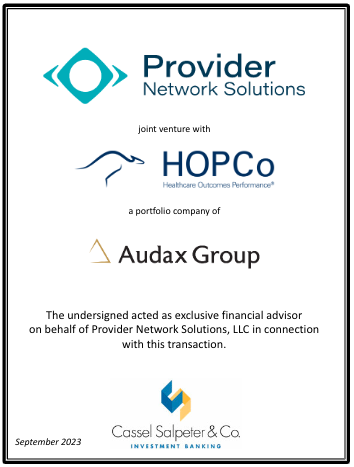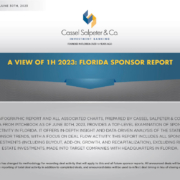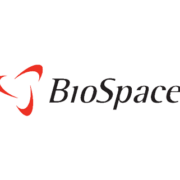Dry Powder Reserves Point to Insatiable Buyout Demand
While uninvested assets in private markets have reached record levels, the capital is waiting to be deployed in a more favorable market.
By Britt Erica Tunick
Fall 2023
Following paltry M&A deal volume in 2022, deal activity declined even further in the first quarter of 2023 as companies held out for a more attractive deal environment with higher valuations. Meanwhile, the increasing cost of capital, combined with rising interest rates, macro uncertainty, the geopolitical environment and inflationary concerns, has made PE firms more cautious. As a result, the global private capital industry was sitting on $3.7 trillion of dry powder as of June 2023, $1.1 trillion of which is allocated for buyouts, according to Bain & Co.
“When you’re in an environment like this, there’s a lot of volatility and people aren’t sure what’s going to happen next. So, a lot of PE firms are sitting on their hands right now,” says Brian McGee, a managing partner at Boca Raton, Florida-based PE firm New Water Capital.
Behind the Curtain
The high levels of dry powder and declining deal volume don’t mean that the market is entirely at a standstill. Investors are very selective about doing deals. “The environment we are seeing is ‘barbelled.’ We see really highquality, class A deals getting done, and we see the lower end of the market where deals need a lot more TLC. What we are not seeing is the middle tier,” says Marc Chase, a partner and private equity leader at Baker Tilly. “The good businesses are nervous about the market and if they don’t see a favorable multiple environment for their company, their just going to wait it out.”
Chris Wright, managing director and head of private markets at Crescent Capital Group, notes there are still opportunities in add-ons, too. “You have a lot of small transactions where companies are buying other companies. These are add-on acquisitions and platform investments that are held by private equity, and not all of those are getting recorded on league tables,” he says. One problem Wright thinks is keeping M&A at bay is the valuation mismatch. “Equity markets continue to be elevated at the same time that cost of capital has gone up, yet sellers expect good prices while buyers want discounts,” he says.
LP Perception
Nonetheless, LPs are not putting pressure on PE firms to deploy capital. “Many LPs deployed significantly into private markets, and the distribution in their own portfolios has dried up, given that lack of exits. … If the capital calls aren’t coming, that’s actually convenient for some LPs,” says Jared Barlow, a partner at Greenwich, Connecticut-based Kline Hill Partners, which focuses on investments in the secondary market. The mindset of both GPs and LPs is that if there is no rush, deploy with prudence.”
And with expenditures and investments outpacing fundraising, industry professionals say that the amount of dry powder has already begun contracting. Added to that is the fact that fundraising in the current environment is extremely difficult for PE firms. Between the downturn in equity over the past couple of years, unweighted portfolios and a lack of returns from PE investments, there is a general dearth of liquidity within the LP community at the moment. In fact, as investors are repositioning their portfolios, there has been a wave of secondary trades among LPs.
James Cassel, CEO and co-founder of Miami-based investment banking firm Cassel Salpeter & Co., agrees that most investors would be content to give PE firms another year or two to recognize the value of their investments. But he believes there are likely to be many cases where the current market conditions make that difficult or impossible for PE firms. “A lot of PE firms that did deals a few years ago stress-tested their companies for interest rates going up a 100 or 200 basis points. But I’m not sure they stress-tested for a 500-point increase,” says Cassel. “The concern comes in if they still own the portfolio company and are gong to continue to own it, but the debt comes due and they’re going to have to refinance at a higher price.”
The Private Credit Opportunity
One area where the PE community is seeing a pop in activity is private credit. As small and midsize banks have backed away from lending following the recent bank collapses, industry experts predict that direct lending will continue to pick up speed. According to Moody’s, private lending to PE-owned middle-market companies is one of the quickest growing areas, with roughly $1.3 trillion in assets under management, $350 billion of which is dry powder. “We’ve seen a lot of demand growing for junior debt in both new investment, as well as support for existing investments,” says Crescent Capital Group’s Wright. “Part of that big opportunity is the highly leveraged transactions that were put together in 2021 and 2022 that now need some help – including through the issuance of preferred equity and partial PIK securities,” he says. Adds Baker Tilly’s Chase: “The current interest rate environment and the turmoil in the banking sector have created an opportunity for alternative debt funds, and I imagine that will continue for the remainder of this year.”
Despite the market calamity, several well-known private debt managers have recently raised large funds. They include HPS, which closed its Core Senior Lending Fund II in May; and Neuberger Berman, which collected $8.1 billion for its Private Debt Fund VI last September.
Looking Ahead
Many PE firms are bracing for an uptick of M&A activity in the third and fourth quarters of this year. Regardless of whether economic conditions improve, the expectation is that PE firms will have to finally start exiting some positions in the coming months. “Even setting aside the capital markets and the LBO and loan markets, the hold time on everyone’s portfolio companies is increasing to a point where there’s going to have to be some more selling happening,” says Jennifer Smith, a partner at Bain & Co.’s PE practice. In the meantime, she says that PE firms need to focus on where they can add value to their portfolio companies to make them more appealing when those exit opportunities finally do arise. “As dry powder comes down and deal markets pick up, you’re going to see a little bit more of a buyer’s market where it’s going to be more competitive,” says Smith.
“A lot of PE firms that did deals a few years ago stress-tested their companies for interest rates going up a 100 or 200 basis points. But I’m not sure they stress-tested for a 500-point increase.”
JAMES CASSEL
CEO and Co-founder, Cassel Salpeter & Co.
Anthony Arnold, a partner at Barnes & Thornburg, says there has recently been a noticeable jump in activity levels. “We are seeing the beginning of a shift from a wait-and-see approach to an actual deployment of capital,” he says. “In just the last two weeks, our middle-market clients issued as many letters of intent as they did from January to the end of May.”
As PE firms begin to pick the sectors and companies they believe will present the most promising exit opportunities, industry experts say firms should be aware there could be a bit of traffic when people finally do step off the sidelines.
“Now is the time that firms should be evaluating and creating their teams in anticipation of when the market is going to turn,” says Baker Tilly’s Chase.
BRITT ERICA TUNICK is an award-winning journalist with extensive experience writing about the financial industry and alternative investing.
Click here to read the PDF.
Click here to read the full article.
Why Biopharma Companies Buy Stock in One Another
By Ana Mulero
Sept. 13, 2023
On June 27, Gilead Sciences purchased nearly 3 million shares of AlloVir stock, costing more than $10 million. The very next day, Gilead purchased just over 1 million shares of Arcus Biosciences for nearly $20 million.
This practice of biopharma companies buying stock from one another used to be rather typical, Ira Leiderman, a managing director of healthcare at Cassel Salpeter & Co., told BioSpace, but times have changed. So, Gilead’s move “is a good example [of the phenomenon], but I don’t think you’ll find many deals like this,” he said.
Commonly referred to as equity investments or cross-holdings, these transactions are made for various reasons. For example, they enable businesses to form strategic alliances, drawing on one another’s knowledge and resources to address challenging problems in drug development.
“Cross-ownership can allow companies to expand their product portfolios, gain access to new technologies and enter different markets more effectively,” Adam Garcia, CEO of the Stock Dork, told BioSpace. Stock purchases can also reinforce relationships that have already been forged.
Indeed, Gilead has been a longtime financial supporter of AlloVir, which went public in 2020, and AlloVir’s CEO, Diana Brainard, was head of the virology therapeutic area at Gilead for a decade. Similarly, Gilead was already working with Arcus on discovering and developing cancer immunotherapies and combination therapies. By purchasing stocks in these companies, Gilead is effectively funneling money into its existing partnerships.
Equity investments can also help diversify and mitigate risks. “By holding shares in multiple biopharma companies, a company can spread its investments across different therapeutic areas and business models,” Garcia added. “This diversification can help cushion the impact of failures in specific drug development programs and maintain a more stable financial position.”
In addition, stock purchases can lead to silent takeovers, where a company gradually accumulates a significant stake in another, often without publicly acknowledging that it has acquired a majority share. By doing so, a company can avoid a traditional public takeover bid, which often involves negotiations and regulatory approvals. Silent takeovers cut through the red tape of the public takeover bid but still effectively shift leadership, strategic direction and overall control of the acquired company, impacting the overall market.
Leiderman and his colleague Margery Fischbein, another managing director of healthcare at Cassel Salpeter, told BioSpace that silent takeovers aren’t happening in biopharma today, however, and that Gilead’s actions of buying stock in a partner are actually not at all common in the current economic environment. And there are several reasons for that, they said. For one, many companies in the biopharma industry are still trying to return to business as usual following the disruptions caused by the COVID-19 pandemic, making them less appealing to investors, including other biopharma firms, Fischbein said.
At the same time, companies that may have at one time considered buying biopharma stock are themselves short on funding. “The most precious resource to a biotech is cash, and it’s tough times out there,” Leiderman said. Rather than buying up stock in other companies, then, some biopharmas are looking to sell stocks to come up with much-needed capital.
“That’s why a lot of companies [biotechs] want to go public because they believe it would be easier for them to raise additional capital,” he said.
At this point, only financially secure firms such as Gilead are in a position to purchase stock in other companies, Leiderman added. “Gilead has a larger bank account than God.”
Fischbein said that the situation comes down to “haves and have-nots,” and in today’s environment, there are more “have-nots,” including in terms of balance sheets, cash and stock prices.
But for those biotechs able to secure financial backing from a pharma firm like Gilead, it could potentially give the company the leg up that it needs, Fischbein said. “It really adds credibility. If somebody like Gilead, GSK, or Novartis is backing the company by taking a significant stake, it’s a real mark of quality and possible likelihood of success.”
Ana Mulero is a freelance writer based in Puerto Rico. She can be reached at anacmulero@outlook.com and @anitamulero on Twitter.
Click here to read the PDF.
Click here to read the full article.
Dealflow Continues to Drop, But Some are Optimistic for a Bounceback This Fall
By Demitri Diakantonis
September 4, 2023
Middle market M&A continued to stall in August, as it has all year, according to data from Refinitiv. But experts say we may be hitting bottom and activity could pick up by the fourth quarter.
There were 42 middle-market deals worth about $14.2 billion in August. By comparison, there were 89 deals worth approximately $28.1 billion in August 2022. The Refinitiv data is based on North American deals valued between $100 million and $1 billion.
The technology and healthcare sectors continue to carry the load with 109 and 96 deals announced so far this year, respectively. Another sector that is picking up in deal activity is energy which has 50 deals announced so far this year. One notable energy deal in August was Earthstone Energy‘s $1 billion acquisition of Novo Oil & Gas Holdings.
While the dealmaking community has been crying in their beers for some time now, one banker sees a bright road ahead. “I believe that M&A will pick up for the last four months of the year as it has already started to,” says Cassel Salpeter & Co. Chairman and co-founder James Cassel. “With interest rates beginning to stabilize, and the sentiment that they are not going to go down quickly, companies that have been waiting to go to market are reconsidering their strategy and considering going to market presently and not waiting.”
With this new reality, Cassel says, high valuations will be reset, and private equity’s need to deploy capital will push deals forward.
In league table tallies, JP Morgan, Goldman Sachs and Bank of America hold the top three spots respectively in market share so far this year. Out of those three, Goldman has advised on the most deals with 28.
A notable performance in 2023 has been Evercore Partners which has jumped from 11th place last year to eighth place this year, while seeing its market share increase from 2.7 to 3.6 percent. The firm helped advise on Crestwood Equity Partners‘ $7.1 billion sale to Energy Transfer LP last month. With a stabilized economy, Cassel is optimistic. “There is still substantial money sitting on the sidelines, with strategic acquirers and PE firms looking to deploy capital and buy good companies,” he says.
See the full list of August’s biggest middle-market deals here.
Click here to read the PDF.
Click here to read the full article.
PROVIDER NETWORK SOLUTIONS

- Background: Provider Network Solutions (“PNS”), based in Miami, FL, is a leading value-based care MSO, managing 3.5 million lives with over 2,000 specialty providers, committed to improving quality care with networks of providers in dermatology, orthopedics, podiatry, and pain management.
- Cassel Salpeter:
- Served as financial advisor to the company
- Conducted a robust process to identify the ideal strategic partner for PNS to achieve its next-level growth objectives
- Maximized the value of assets contributed to the joint venture while optimizing the value of the assets not involved in the transaction
- Challenges:
-
- Managing the unique requirements of a joint venture, wherein PNS carved-out and contributed its three musculoskeletal networks (orthopedics, podiatry, and pain management) to the joint venture
- Creating a roadmap for the various agreements covering personnel, administration, and services for the joint venture
-
- Outcome: In September 2023, PNS and Healthcare Outcomes Performance Company (“HOPCo”) created a joint venture that acquired PNS’s musculoskeletal networks. The new venture, named HOPCo Network Solutions, is an innovative value-based care platform managing networks in Florida of over 1,100 specialty providers and 1.8 million lives.

Get In Touch
Cassel Salpeter & Co.
801 Brickell Avenue,
Suite 1900
Miami, FL 33131
(305) 438-7700
Stay Informed
Sign up today for insights and growth strategies.
Subscribe Now





